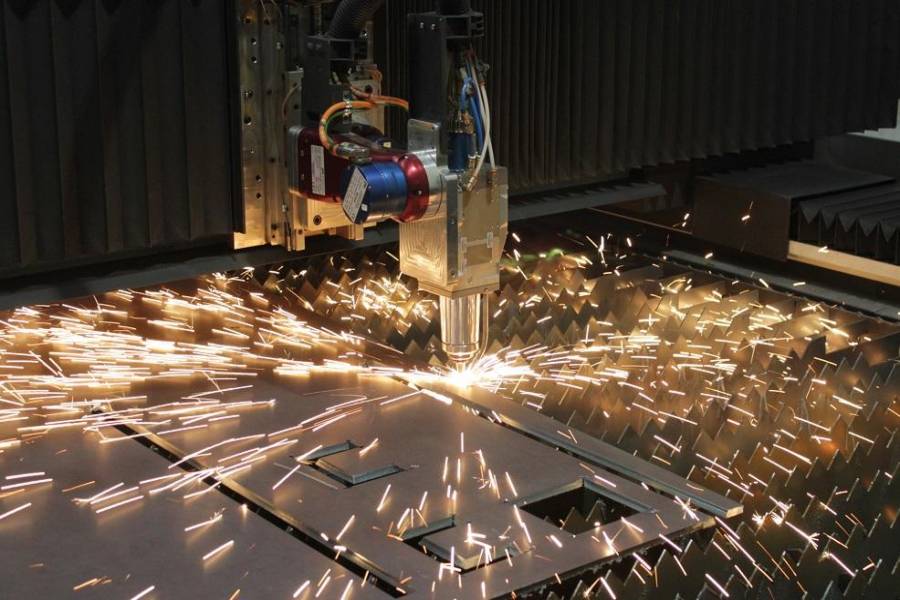One-step laser cutting and chamfering eliminates the need for subsequent processes such as drilling and edge cleaning.

To prepare the edges of the material for welding, manufacturers often make beveled cuts in the sheet metal. The beveled edge increases the surface area of the weld, which makes it easier to penetrate material on thick parts and makes the weld stronger and more resistant to stress.
Accurate, uniform bevels with correct bevel angles are a major factor in producing weldments that meet the required specifications and tolerances. If the bevel is uneven along its entire length, automatic welding may not achieve the desired quality and manual welding may be required to provide maximum control over filler metal flow.
The eternal goal of metal manufacturers is to minimize costs. Combining cutting and beveling operations into one step increases efficiency and eliminates the need for subsequent processes such as drilling and edge cleaning, thereby minimizing costs.
Equipped with a 3D head and five interpolating axe
s, the laser cutting machine can complete processes such as drilling, beveling and marking in one cycle of material input and output without additional post-processing. This type of laser accurately chamfers the entire length of the cut and drills small diameter straight and tapered holes to high tolerances.
The 3D bevel head provides up to 45 degrees of rotation and tilt, allowing it to cut various bevel shapes such as internal profiles, variable bevels and multiple bevel profiles including Y, X or K.
The tapered head provides direct beveling of 1.37″ to 1.57″ material, depending on application and bevel angle, and offers a range of cutting angles from -45 to +45 degrees.
The X-bevel, commonly used in shipbuilding, railroad components, and the defense industry, is critical when parts can only be welded on one side. X-bevels are typically angled between 20 and 45 degrees and are most commonly used for welding plates up to 1.47 inches thick.
In testing with SG70 welding wire on 0.5″ thick S275 steel plate, laser cutting was used to create a top bevel with a 30 degree bevel angle and a straight cut height of 0.5″. Laser cutting produces a smaller heat affected zone than other cutting processes, which helps improve the end result of the weld.
For a 45 degree bevel, the maximum sheet thickness is 1.1 inches, resulting in a total bevel length of 1.6 inches.
Straight and bevel cutting processes form vertical lines. The roughness of the cut surface determines the quality of the final finish.
The 3D laser head with interpolating axes is designed for cutting complex contours in thick materials with multiple bevels.
Roughness affects not only the appearance of the edge, but also the frictional properties. In most cases, roughness should be kept to a minimum, as the sharper the lines, the better the cut quality.
A thorough understanding of material behavior and interpolated motion when cutting internal bevels is critical to ensure that the desired laser beveling results are achieved.
Optimizing fiber laser settings for high quality bevel cutting is not significantly different from the normal settings required for straight cutting.
The difference between achieving the best quality bevel and straight cuts is the use of powerful software that supports various cutting methods and tables.
For bevel cutting operations, the operator needs to be able to set up the machine on a specific table that cuts outside and around the perimeter, but more importantly, on a table that allows accurate inside cuts using interpolated motion.
The 3D head with five interpolated axes integrates a gas supply system for easy access to oxygen and nitrogen, a capacitive height measurement system, and an arm tilt up to 45 degrees. These features help expand the capabilities of the chamfering machine, especially when processing thick sheets.
This technology provides all necessary preparation of the part in one process, eliminating the need for manual preparation of edges for welding and allowing the operator to control all processes associated with the final product.
FABRICATOR is the leading metal forming and metalworking magazine in North America. The magazine publishes news, technical articles and case histories that enable manufacturers to do their job more efficiently. FABRICATOR has been serving the industry since 1970.
Post time: Aug-26-2023

